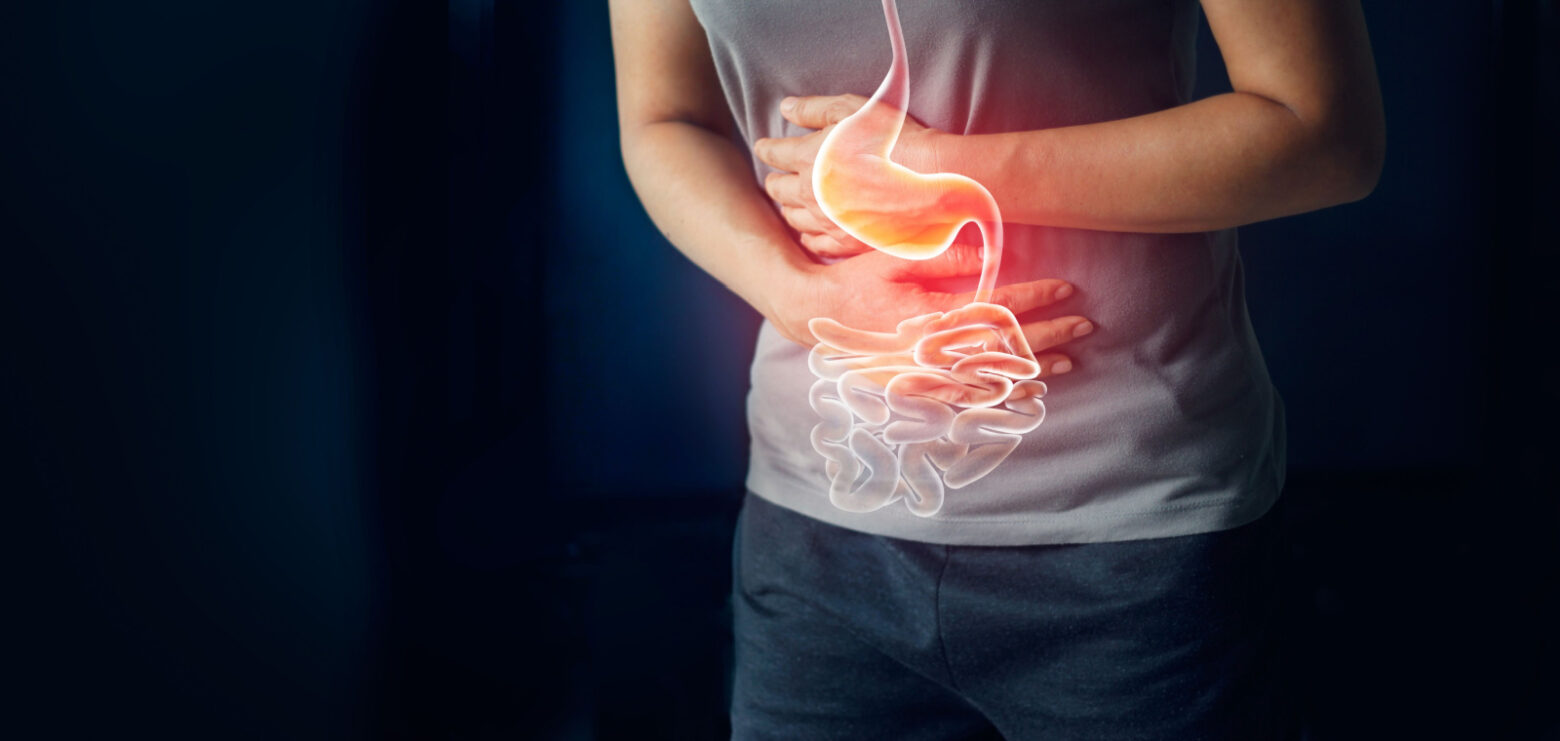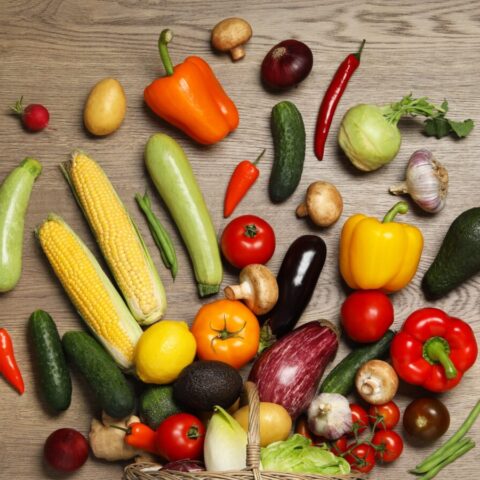Autoimmune Gastritis Diet: Foods to Avoid

Reviewed by The Paleo Diet’s Chief Science Officer, Dr. Mark J. Smith on April 15, 2022
What is Autoimmune Gastritis and can The Paleo Diet® help ease symptoms?
From time to time, we get questions asking if The Paleo Diet can help with certain conditions. One letter we received was from a woman who had been diagnosed with inherited autoimmune atrophic gastritis.
Her parietal cell antibody count was off the charts. It should not have been greater than 20 but clocked in at 124.6! Parietal cells are important cells that line the stomach, and protect the digestive barrier. Having extremely high levels of antibodies against her stomach parietal cells meant that her own immune system was attacking her digestive barrier. This also put her at high risk for stomach cancer.
This woman’s question to us was whether The Paleo Diet would be helpful considering she had “inherited” this autoimmune condition.
The short answer is yes. Diet and other lifestyle factors can trigger autoimmune reactions. So, even though they have a genetic component, changing the way she eats can in turn help bring the condition under control. Here’s how adopting The Paleo Diet might be able to help.
What Is Autoimmune Gastritis?
Let’s begin with the basics: what is autoimmune gastritis?
Autoimmune gastritis is a condition characterized by inflammation of the stomach. Essentially, the immune system attacks the stomach lining, leading to an inability to produce stomach acid, an intrinsic factor needed for the body to absorb vitamin B12. [1]
It is an “atrophic” condition, referring to the deterioration of the mucosal lining of the stomach, which atrophies over time.
What Causes Autoimmune Gastritis?
All autoimmune conditions have certain commonalities that lead to the immune system inappropriately attacking its own body. According to Dr. Alessio Fasano, chief of Pediatric Gastroenterology and Nutrition at Massachusetts General Hospital, the three essential factors in any autoimmune condition are 1) genetic predisposition, 2) leaky gut, and 3) an environmental trigger. [2]
So, while autoimmune gastritis may be “inherited,” as mentioned by the patient, the genetic part is only one leg of the three-legged stool of autoimmune disease. There also has to be a compromised gut lining and some type of trigger, such as a toxin, pathogen, or emotional trauma.
Symptoms and Diagnosis of Autoimmune Gastritis
Symptoms of autoimmune gastritis tend to be mild at first, and become more pronounced as the disease progresses. Some signs and symptoms of autoimmune gastritis can include the following: [3]
- Fatigue
- Abdominal pain
- Nausea or vomiting
- Low vitamin B12 levels
- A diagnosis of pernicious anemia
- Lack of stomach acid, which leads to delayed stomach emptying, small intestinal bacterial overgrowth (SIBO), gastric bacterial overgrowth, and an increase in GI infections like C. difficile colitis.
Autoimmune gastritis is diagnosed through a parietal cell antibody test performed through a blood sample. This test also diagnoses the condition of pernicious anemia. Other testing may include doing an endoscopy where the affected tissue is biopsied. [3]
Foods that Trigger Autoimmune Flare-ups
Virtually all autoimmune diseases require both inherited (genetic) factors and environmental factors. The main inherited factor associated with autoimmune diseases is a set of genes that code for many functions of the immune system, called the human leukocyte antigen (HLA) system. Mutations of some of the genes in the HLA complex are associated with autoimmune diseases. If you have inherited one of these so-called HLA susceptibility haplotypes, then your risk for an autoimmune disease rises significantly.
While it’s generally necessary to have one of these gene mutations, it is still estimated that about 70 percent of the risk for autoimmunity comes from environmental factors. Many immunologists and scientists (Dr. Cordain included) studying autoimmune diseases now believe that increased intestinal permeability or a “leaky gut” represents a fundamental environmental trigger that precedes the development of most autoimmune diseases.
Gluten
Gluten-free diets are therapeutic for many autoimmune patients (not just celiac patients). That’s because wheat contains at least four compounds (gliadin, wheat germ agglutinin [WGA], amylase-trypsin inhibitors, and thaumatin-like proteins) that can increase intestinal permeability and inappropriately activate the body’s immune system.
Grains with Gliadin Like Rye and Barley
However, this issue isn’t limited to wheat. There are other gliadin-containing grains including rye and barley. In Dr. Cordain’s most recent book, The Paleo Answer, he outlines the nutritional problems with grains and how they increase intestinal permeability.
Legumes & Nightshades
Besides grains, other elements that can also increase intestinal permeability include legumes (peanuts and beans), potatoes, and nightshade plants.
Its important to point out that tomatoes are also a nightshade, but their impact is less black-and-white than grains. Green tomatoes, cherry tomatoes, and yellow tomatoes contain high concentrations of the compound alpha-tomatine which can also increase intestinal permeability. Fortunately, ripe red tomatoes are almost devoid of this compound.
Potatoes contain two toxic glycoalkaloid compounds; saponins, which are known as alpha solanine, and alpha chaconine. These compounds damage the intestinal barrier, increase intestinal permeability, and rapidly enter the bloodstream, often causing adverse health effects.
Eggs
This may come as a surprise, but there’s one final food to consider avoiding: egg whites. They contain a compound called lysozyme which can impair intestinal function and allow large protein molecules (antigens) access to the immune system.
Other Foods & Medications
Other foods, chemicals, and medications which increase intestinal permeability and may be problematic for autoimmune patients are:
- Ethanol (alcohol)
- Aspirin, ibuprofen and other NSAIDs
- Antacids containing aluminum hydroxide (Alum)
- Birth control pills
- Hot spicy peppers containing capsaicin (salsa, hot sauce, chili peppers, cayenne peppers, etc.).
Try an Elimination Diet First
If you have an autoimmune disease, we recommend that you eliminate grains, dairy, and legumes from your diet first. If you still experience adverse effects, try eliminating the other listed foods that increase intestinal permeability.
Can The Paleo Diet Help Autoimmune Gastritis?
While there is no guarantee that The Paleo Diet will help autoimmune gastritis to go into remission, many people all over the world with a variety of autoimmune diseases have reported therapeutic effects or even complete remission of their symptoms after following this lifelong way of eating. See our guide, How to Start an Autoimmune Protocol Diet.
Dr. Cordain and The Paleo Diet’s CEO, Trevor Connor, then a graduate student of Dr. Cordain, completed a large case study involving about 100 autoimmune patients who had adopted the Paleo Diet. The results were encouraging, particularly for patients with autoimmune diseases involving the GI tract. However, no subjects with autoimmune atrophic gastritis participated in the study.
There are no health or nutritional risks of adopting The Paleo Diet. In fact, the opposite is true. This way of eating actually reduces the risk for many common chronic diseases and increases the nutrient density of the diet because fruits, veggies, seafood, and meat are vastly superior nutritionally to grains, processed foods, and dairy products which comprise about 70 percent of the calories in the typical U.S. diet.
Transitioning to a Diet Better for Autoimmune Gastritis
Autoimmune atrophic gastritis presents a unique challenge. Because one of the symptoms is a lack of stomach acid, it would be prudent to eat less animal protein in the early stages of adopting the diet. As the condition improves, so too will the production of stomach acid, and a higher protein consumption may be possible.
Supporting digestion can also be accomplished by choosing fish versus beef or poultry, making sure you chew your food thoroughly, and taking 1-2 teaspoons of apple cider vinegar before eating. There are many other ways to support digestion, so consider working with a nutritionist that has experience in this area.
References:
[1] Kulnigg-Dabsch S. (2016). Autoimmune gastritis. Autoimmungastritis. Wiener medizinische Wochenschrift (1946), 166(13-14), 424–430. https://doi.org/10.1007/s10354-016-0515-5
[2] Fasano A. (2011). Zonulin and its regulation of intestinal barrier function: the biological door to inflammation, autoimmunity, and cancer. Physiological reviews, 91(1), 151–175. https://doi.org/10.1152/physrev.00003.2008
[3] Genetics and Rare Diseases Information Center. (2016). Autoimmune atrophic gastritis. National Center for Advancing Translational Sciences. Retrieved from: https://rarediseases.info.nih.gov/diseases/10310/autoimmune-atrophic-gastritis
Betsy Schroeder
Betsy does research and writing for a few different websites in the natural health field after taking Masters level courses in Nutrition & Functional Medicine through the University of Western States.
More About The Author




